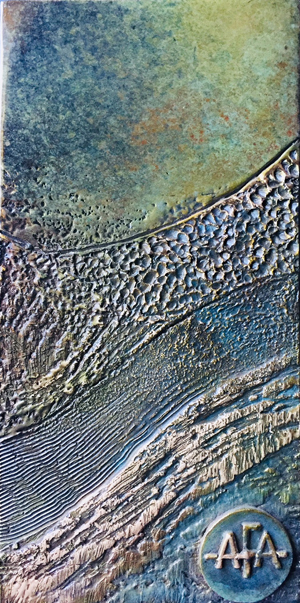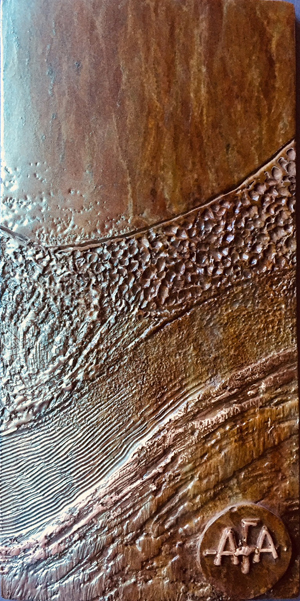Your Bronze Art Foundry Wants you to Plan Ahead
Selecting a patina to keep your fine art bronze sculpture relevant in today’s art world takes more attention to details than ever before. Collector’s tastes can be fickle and creating artistic appeal with the right combination of subject, composition, point of view and patina has never been more important. As the owner of American Fine Arts Foundry, a premier bronze art foundry in Burbank, California, I find that sculptors often struggle with choosing the best patina for their new works, and in many cases, it’s an afterthought. Trying to find just the right colors, method of application, patterning techniques, etc. to help your sculpture best communicate its story can be daunting. At American Fine Arts Foundry we are always developing our portfolio of amazing, hot, fresh patinas, using both traditional and modern materials to support our clients in pushing their artistic boundaries and ideas while staying fresh and relevant.
1. One Color.
I have found that most sculptors think monochromatically because the material they create in is usually clay and the process is generally about form, line, texture, and composition. Rarely is the idea of color given any consideration until the bronze is finished and ready for patina. At this point, I too often see sculptors, especially of modern works, default to the tried and true color options like “Classic Brown” as a safe choice. Experiment with multiple colors, color transitions, layering techniques, hi-polishing, and more to bring something new and buzz-worthy to the galleries and their collectors. See the sample plates that show variations on green and brown patinas using patterning and transitions which when used appropriately can accentuate the form of your newest sculpt and give it a fresh, updated look.
2. Play it Safe.
Serious collectors are looking for new and novel when they walk into a gallery. Many of the sculptures I see in galleries are patinated with patina materials and techniques that have been around for years. As an industry insider and art appraiser, I can usually assess a sculpture and guess what decade it was originally produced based on the patina. If your work is still sending out the 90’s vibe, then it may be time to change things up and opt for a more current patina.
3. Don’t Sculpt for the Patina.
Color can add new dimensions so look for ways to prepare for dynamic patinas while sculpting your original. We can do a lot with tools and techniques to transition and fade colors, but planning ahead with sculpting highs and lows, scribe lines, textures, and other techniques to give the patina more definition can make a strong impression and add visual interest. If you have the drawing skills it can help to illustrate the sculpture with the color you have in mind to see how it
If you feel stuck in a rut with your patinas and want some new direction, or your sculpture sales have slowed, I invite you to visit our bronze art foundry to see the broad spectrum of patinas we have created and to let us help you explore taking your sculpture in some new directions and push beyond the limits of tradition. We have many stories of how we have helped a client increase sales with a new patina. Let us help you add that WOW factor to your latest sculpt!
Here are some Patina examples our Bronze Art Foundry offers:



EXCLUSIVE & UNIQUE PATINA EXAMPLES
DOWNLOAD THE 10 PAGE WORKBOOK ILLUSTRATING OVER 100 SPECIALTY PATINA FINISHES.





